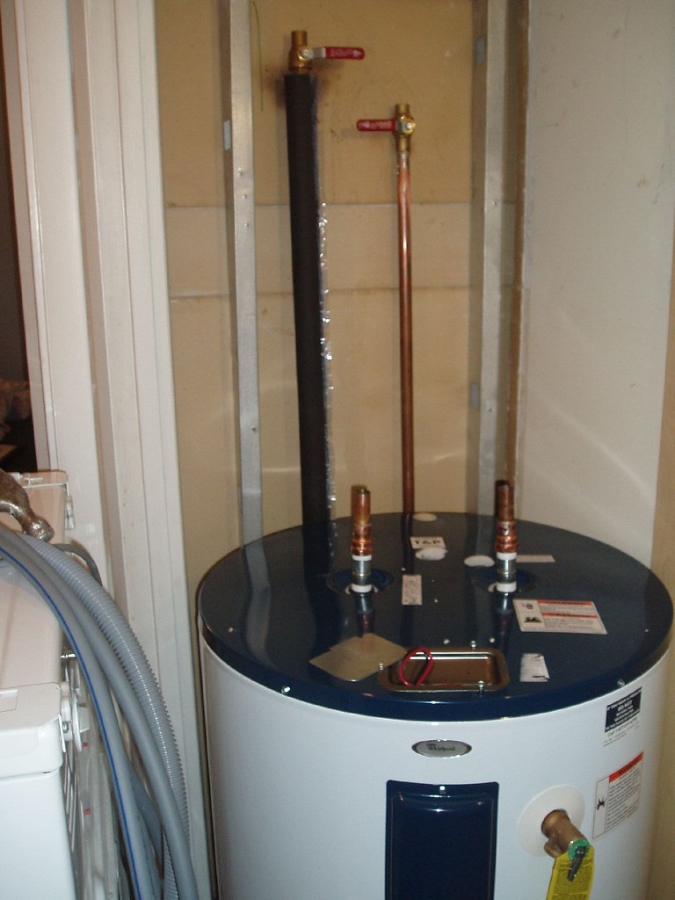Many people don’t realize that if they want their water heater to run efficiently, they must keep it in good condition through yearly or bi-annual maintenance procedure. Dirt, sediment and different minerals settle on the bottom of a hot water tank over time. Depending on the quality of water supplied to your home, these ingredients can add up quickly, degrading the performance of your water heater and costing you more money in terms of utility bills.
If you fail to maintain your water heater, sediment and a mineral deposit will allow the water heater tank to rust, and eventually, the entire unit will be ruined. To prevent this, perform routine maintenance on your water heater. Here are some steps for how you can maintain your water heater.
Electric and Gas Water Heater Maintenance
Check the Pressure Relief Valve
The pressure relief valve prevents a water heater from exploding in case an enormous pressure builds up inside. It’s a switch located on the side of the heater with a long pipe leading down from it. This is a discharge pipe that takes the water outside of the tank in case the pressure inside gets too high. The valve automatically opens up when the pressure exceeds a specific limit. During your yearly maintenance, check the pressure relief valve to ensure that it is working correctly. Lift the lever and see if water comes out of the discharge pipe. If it does, you are good.
Check the Anode Rod
The anode rod attracts corrosive minerals to prevent them from corroding the tank. We recommend you replace the anode rod after every five years as this can lengthen your water heater’s life.
To replace the anode rod, first, find out where it is located by checking your water heater’s user manual. You might need an impact wrench to break the rod free. Once you have taken the rod out, check it for signs of corrosion. If your tank is five years old, it’s best to replace the rod even if it isn’t corroded.
Flush the Tank
Flushing the water heater tank every year prevents the build-up of sediment deposits that can degrade the performance of your water heater. To flush your water heater tank, turn off the power or gas and water supply to it. Open the pressure release valve and hot water tap, then using a bucket and a hose, drain the water until it runs clear. If a lot of sediment has deposited inside the tank, you will need to let all the water flow out of it. Then, turn on the supply of water to the tank and let cold water run through the tank until water starts coming out clear. Keep flushing until there is no more sediment.
Tankless Water Heater Maintenance
Flush the Tankless Water Heater
Flushing the tankless water heater is an essential part of maintenance work. To flush your heater, turn off the power or gas and cold water supply to the unit. Then shut off the hot water valve on the unit. Attach a garden hose to a sump pump’s or pond pump’s outlet and the cold water isolation valve of your unit. Connect another hose to the hot water isolation valve. Tighten the couplers using an adjustable wrench.
Place the other ends of both hoses into a 5-gallon bucket. Then fill this bucket with 5-gallon of clean white vinegar. Open both the hot and cold isolation valves on your water heater and turn on the sump pump to circulate all the vinegar through your unit. Let the pump run for 45 minutes. Dump the used vinegar out of the bucket and fill the bucket with clear water and repeat the same process for five minutes.
Clean the Air Filter
The air filter prevents debris from getting into the tankless water heater. Cleaning it is important during the maintenance work to ensure that air keeps flowing smoothly into your unit. The air intake filter can be accessed by removing the face plate of the unit. For detailed instructions – check your unit’s manual.
Once you have removed the filter, rinse it with cold water and then dry it using paper towels and reinstall it.
Benefits of Water Heater Maintenance
Increases Efficiency
Sediment and mineral build-up inside the water heater tank affect your unit’s performance. You may start hearing strange noises from your water heater because of these deposits. Moreover, your water heater may not be able to provide you with hot water like it once used to. Maintaining your water heater, can prevent sediment and mineral deposits from building up inside of your water heater tank. This will allow your water heater to work efficiently.
Consistent Quality
Everyone hates getting greeted with cold water in the shower on a cold morning. If you fail to maintain your water heater, it won’t be able to heat the water in time and thus you’ll likely have to take cold showers. This is why the consistent maintenance of a water heater is so essential.
Extended Lifespan
The average lifespan of a water heater is 10 to 12 years. However, your water heater may not last this long if you neglect its maintenance. Subject your unit to a bi-annual or annual maintenance to extend its lifespan. Staying abreast of maintenance will allow you to identify rust build-up and clear it before it can affect your water heater.
Final Thoughts
If you want your water heater to perform at its best, focus on its maintenance. We have shown you how you can maintain your water heater. If you don’t have the time or expertise to carry out annual maintenance, hire a professional technician from Rowin Plumbing. Our technician will check your water heater and perform all the necessary maintenance tasks.
Call us at 661 252 5757 for your water heater service.

